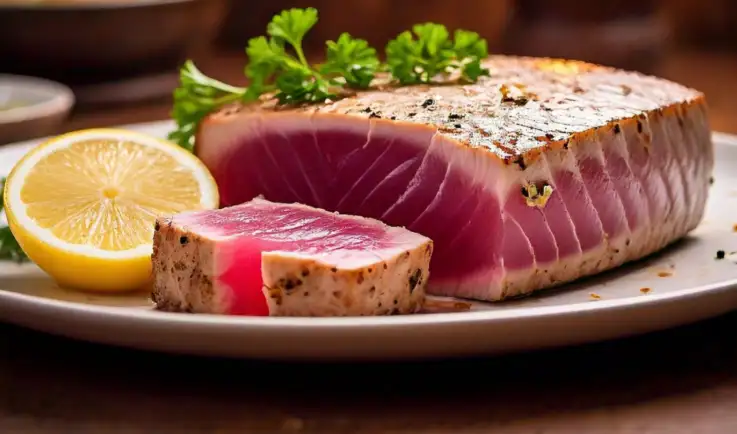If you’ve ever enjoyed a can of tuna or a fresh tuna steak, you might have wondered, “Does tuna have bones?” The short answer is yes, but here’s a deeper dive into the fascinating details of tuna anatomy and processing that make this question worth exploring.
The Basics: Tuna and Its Bones
Tuna, like all fish, has a skeletal system. However, the structure of tuna bones is unique. Each tuna yields four meaty loins, which are the boneless portions most commonly processed for consumption. These loins are skillfully trimmed by hand and inspected multiple times to remove any bones. Despite these meticulous efforts, there’s always a slight chance that small bones may remain, especially in canned tuna.
In canned tuna, any residual bones are typically softened during the high-heat sterilization process. These softened bones crumble easily and are often undetectable when eaten.
Why Are Some Tuna Loins Boneless?
The loins of a tuna are positioned such that they naturally separate from the bone structure during processing. This anatomical advantage makes tuna a popular choice for steaks and fillets with minimal bone content.
Occasional Bones in Canned Tuna

Canned tuna undergoes rigorous trimming and inspection by highly trained personnel. However, on rare occasions, small bones embedded in the loin may escape detection. These bones, once exposed to the sterilization process, become soft and pose little risk to consumers.
Tuna Types and Their Preparation
Tuna comes in various species, each with its unique characteristics:
- Albacore Tuna: Known for its light, almost white meat, albacore is the most common species found in canned tuna.
- Ahi Tuna (Yellowfin): Often used in sushi, this variety has red flesh due to high levels of myoglobin, an oxygen-binding molecule that enhances muscle performance.
Both types are prized for their versatility in cooking. Whether pan-seared, grilled, or canned, tuna is a flexible option for various culinary styles.
Cooking and Enjoying Tuna
For those fortunate enough to access fresh tuna, the loins can be cut into steaks and prepared in several ways:
- Grilling: High heat for a short time creates a perfect sear.
- Pan-Searing: A quick sear ensures the center remains rare, preserving the delicate flavor.
- Marinating: Popular marinades, such as vinaigrettes, add depth to the taste.
Conclusion
So, does tuna have bones? Yes, it does—but the way tuna is processed ensures that bones are rarely an issue for consumers. From the meticulous trimming of fresh loins to the high-heat sterilization of canned tuna, every effort is made to provide a bone-free dining experience. Whether you’re enjoying a fresh albacore steak or a classic tuna salad, you can savor your meal with confidence.
This article provides clarity on a common query and showcases the care taken to deliver high-quality tuna products. Whether you’re a fan of canned tuna or fresh steaks, you can enjoy this sustainable and versatile fish worry-free.

